The 2009 fall semester is the fifth semester in a row that has had native speakers interacting directly with non-major students at CTUST in a relaxed environment with the intent of getting students to speak in English. The program has been a success in so far as some students have come back several weeks in a row and this has given us -and, even more importantly, them- an opportunity to observe improvement. Topics have ranged from mundane topics such as school, sports, weather, travel, food, music and television to more advanced topics such as the future, emotions, shopping, bad habits (such as smoking and drinking) and good English study habits.
The native speaking teachers are mostly full time teachers at CTUST. The classes differ from ordinary classes in many ways. First of all, no grades are offered, although teachers do provide feedback to students, judging their participation as anything from "weak" or "so-so" to "great" or "excellent". The feedback is intended not so much to gauge their level but to encourage students to come back and try harder. Teachers do not offer classes at different levels although a teacher can very quickly adjust the level of the class to suit the level of the students: weak students are asked to repeat after the teacher and answer mainly yes/no questions whereas more advanced students are expected to speak in full sentences and talk freely about themselves. Some students will even ask the teacher questions -which the teacher will encourage- but then the teacher has to keep his or her answers brief and get the students talking again. In general, the students at these English Clinic classes are coming voluntarily and are more motivated than even English majors but are typically much weaker than English majors and will sometimes need to hear a question spoken a few times slowly before they can answer.
The December 3rd classes were at 1:20 and 3:10 and lasted for fifty minutes each. The topic was Hopes and Dreams. At first it seemed as though the topic would be too difficult for the students but the teacher compensated by explaining the vocabulary in Chinese. The teacher was able to do this partly because he had been in Taiwan for over six years and had studied a lot of Chinese in that time and partly because he had brushed up on the vocabulary he needed to use, having taught the same subject previously to both majors and non-majors in recent years. What could have been two difficult classes thus turned out to be no problem as most students were able to answer in full sentences. That being said, there was one student in the 3:10 class who had trouble understanding questions even when they were explained both by the teacher and his classmates. It is, however, better to have students who don't understand and yet still pay attention and make an effort than to have students with more potential who aren't interested and talk amongst themselves in Chinese: the latter type of student is less common in English Clinic classes simply because they are there voluntarily. The student in question was eventually able to answer some questions.
Overall, it was a good afternoon: there were sixteen students altogether, ten at 1:20 and six at 3:10. The teacher asked the 1:20 students if they wanted to stay around for another hour and engage in free talking as no students were coming at 2:15 but the students all opted not to: the teacher didn't bother to ask the same question to the 3:10 class because their level was lower and free talking would have been too difficult for them. It was hoped that some of the students from either group would come back next week so they could get some more practice.
On December 10th, there were three classes, one with eleven students, one with four students and one with nine students. The first and third classes were about coming and going (around the house or around town) and the second class was about preventive medicine and home remedies.
The first class went well in the sense that there were many talkative students who interacted well with the teacher and made him feel comfortable and relaxed. Having the teacher be comfortable and relaxed is not necessarily a good thing for all the students, however: some students would prefer the teacher to speak more slowly and more deliberately even though doing so is unnatural and stressful for the teacher: a teacher who is relaxed is not constantly worried that students don’t understand. It turned out that there were a few relatively weak students (mainly students from Early Childhood Education) mixed in with the group so the teacher had to explain some things twice and so the lesson took longer than usual. At 2:10 the teacher told students that he wasn’t finished but anybody who wanted to leave could. Four students stayed on after 2:10 even though the teacher did try to encourage others to stay.
Instead of immediately switching to the new topic, the teacher continued to speak about the old topic. With the weaker students gone, the teacher explained the difference between “borrow” and “lend”, “bring and take” and “come and go”. This took about fifteen minutes during which time no new students came. The teacher reluctantly informed the students that with no new students coming he would stop. He suggested to students that they come back at 4:05 when the topic would be different from the one they just had. No students wanted to come back at 4:05, however, and instead asked if the teacher couldn’t have a “free talking” class. The teacher said it would be easier if he actually had a topic to talk about so he decided to teach about preventive medicine and home remedies.
Preventive medicine and home remedies is a class aimed at nursing and other health care students so it was a bit awkward speaking instead to radiology and marketing students. Nevertheless, the class went well: the weaker students had already left and the teacher didn’t have to explain all the vocabulary. (It also helped that the teacher included Chinese translations on the handout precisely so he wouldn’t have to explain every word.) The teacher asked in general terms what students did to keep healthy (sleeping, exercising, eating right and bathing) and he discussed the various ways that diseases were prevented (vitamins, vaccines, keeping warm and staying away from sick people). He also discussed the difference between a virus and a bacterium and spoke in general terms about how diseases were treated.
The last class returned to the original topic. With a couple fewer students, instead of finishing late, the teacher found he had a bit of extra time at the end of class and decided to go back and discuss about what different types of hotels (motels/inns), restaurants (fast food/coffee shops), bars (wine bars/clubs) and theatres (playhouses/concert halls) there are. He did this until the class was over. As he was leaving he spoke to one student who hadn’t said very much in class: it turned out he was just shy and was able to speak English fairly well but didn’t like speaking in a large group. I think this is a matter that needs to be taken under consideration: a large group may not benefit all students equally and with some students being unable to take advantage of a large group at all.
Week 14 added a new twist: the handouts were double-sided which meant that students who were taught about Shopping also got the Food Poisoning handout on the other side and vice-versa. This made things a bit simpler: the teacher could, for example, simply ask students to turn their handouts over and continue the lesson with the new topic and then ask students if they wanted to stay for another hour having already introduced the new topic. This is what was done during the first hour. In the second hour, the topic was supposed to be Food Poisoning but as none of the students from the first hour stayed for the second hour the teacher decided to do the Shopping topic again because it was easier. Four students from the third hour stayed for the fourth hour, however, so Food Poisoning was officially the topic for the fourth hour and this time the teacher asked the students to turn their sheets over at the end of the fourth hour so they could be asked some questions about Shopping too. Thus, every hour had students exposed to both topics. It was good to be able to do this because the class sizes are smaller now than they were two years ago so it is harder now to get students to talk for a whole hour compared to back then. (In larger classes there is at least one student who can speak freely plus at least one student who needs to have questions asked repeatively.)
The first class today had only five students even though fifteen students had shown up. The students who came were from marketing, childhood education and radiology. One student was actually not registered in any program. In this particular case it was really necessary to have at least five students as the first four students neither had much to say nor had trouble understanding the question: they simply didn’t do a lot of shopping nor get sick very often.
The second class had eleven students even though thirteen students had signed up. It is possible that some of the students who had signed up for the first hour came late and attended the second hour. (One student came late in the first hour and said that there was a volleyball game during the lunch hour. He didn’t say if he had been playing volleyball or merely watching.) The students who came were from dentistry, radiology and management information systems. As there were no students from either nursing or nutrition, the teacher decided to start by asking students about their shopping habits. This turned out to be the right thing to do as the ESP topic would have been a bit too difficult for them to start with.
The third hour had only nine students even though sixteen had signed up. The teacher knew that sixteen student had signed up for the fourth hour but he was worried that only a fraction of them would only show up. As it turned out, only four students showed up for the fourth hour but the teacher had managed to convince four of the students from the third hour to stay on for another hour. The students in the third and fourth hours were childhood education, nursing and security students with two students each from nursing and security staying on for the whole two hours.
In addition to the topics of Shopping and Food Poisoning, the teacher talked with the students about the difference between “looking for” something and actually “finding” something and discussed phrasal verbs with the ending “up”. One problem that students had was with the pronunciation of the words “cats”, “dogs” and “price” and the teacher spent a lot of time in the first hour getting students to pronounce correctly. Some students looked confused which had the teacher wondering if they could even hear the difference between “cat” and “cats” or “dog” and “dogs”. The teacher recommended to one student that if she couldn’t say “What is the price?” correctly then she would have to say “How much is it?” instead. In practice however, students will inevitably find it difficult to be understood by foreigners (be they native English speakers or non-native non-Chinese English speakers) if they can’t pronounce certain words correctly. This fact should not be overlooked by any of us when we teach English.
Finally, Week 15 had twenty students show up in the first period. Of those twenty, six stayed on for another period, including one who stayed on for two periods. An additional seven students showed up for the second period of which two stayed on for another period. Thirteen students came for the third period and no students came for the fourth period. Twenty students had originally signed on for the first period, fourteen for the second, seventeen for the third and four for the fourth: it seems everybody who signed up for the first and third periods came but less than half those who signed up for the second and fourth actually came, if any at all.
The topics this week were Learning English and Long Term Treatment and Rehabilitation. The students this week were mostly from Radiology, Dentistry and Security with only a few students from Early Childhood Education and a couple from nursing. More emphasis, therefore, was placed on Learning English than on Long Term Treatment and Rehabilitation: it was touching when a couple of students in the second period talked about how their respective grandfathers died from diabetes. (One other student said his grandfather had had a stroke but got better.) Besides, with twenty students in the first period the teacher didn’t get much of a chance to talk to them individually about what they did to study English so he used the beginning of the second period to talk to students about their study habits before moving on to the new topic.
Besides the main topics, the teacher also talked to students about gerunds and infinitives and about phrasal verbs ending in “down”. Students didn’t seem to have much trouble understanding the teacher this week: instead the teacher had to insist that students not use Chinese because to explain the teacher’s questions to other students; it just didn’t seem necessary this week. Instant translation of questions posed in English can easily become a crutch: students need to try to listen to questions posed in English and think about how to answer them without having to wait for a Chinese translation.
With the Week 15 classes finished, the Language Centre classes were finished until next semester.
Merry Christmas.
Martin
Friday, 25 December 2009
Subscribe to:
Post Comments (Atom)




































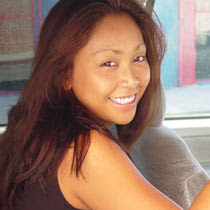



























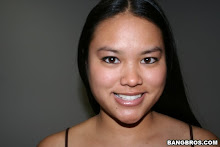






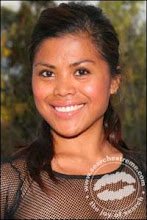






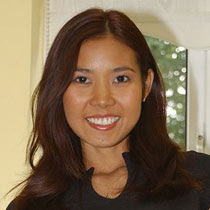

















































































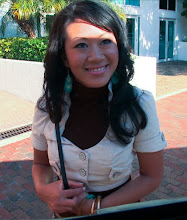







































No comments:
Post a Comment